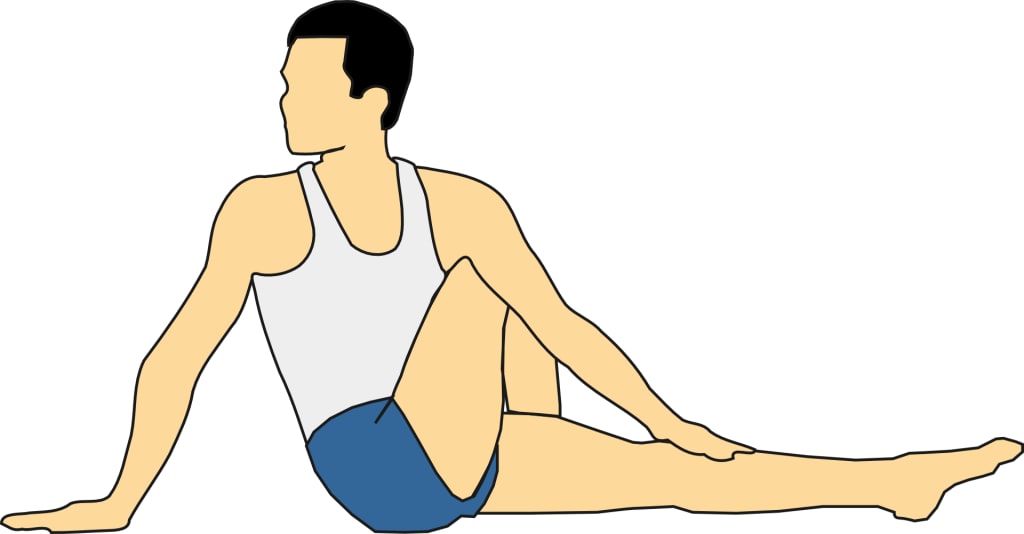Change your muscles
Stretching will help you change your muscles

An athlete is practicing for a match. After putting on their equipment and warming up, it's time for one final exercise: stretching. Athletes typically stretch before exercise to prevent injuries like muscle rips and strains. However, does stretching actually stop these problems? How long do the advantages of stretching last, if at all? We need to understand what is actually occurring in the body when we stretch in order to respond to these queries. Our athlete may be stretching in one of two ways.
Dynamic stretches, which are deliberate motions that contract a variety of muscles as they move. And static stretches, in which the stretcher maintains a posture to maintain the length and tension of a particular muscle. For 30 seconds, our athlete strains his hamstring beyond its normal range of motion while performing a static hamstring stretch. But despite the fact that we frequently compare extending a muscle to stretching a rubber band, muscles are actually made up of many tissue types that work together to form a complicated structure.
Rubber is elastic, which means it can resist stretching and then snap back into place. Muscle, however, is viscoelastic. This indicates that muscles undergo alterations when stretched under tension in addition to their elastic properties. Watch this in action now. On a larger scale, this hamstring stretch is tugging on the tendons that join this muscle to neighboring bones as well as the layers of protecting tissue that surround the muscle fibers. Collagen and elastin, two elastic proteins that are present in these tissues, enable them to gradually extend during the strain.
Sarcomeres, the smallest contracting unit of muscle tissue, make up millions of these skeletal muscle fibers on a smaller scale. Long, fibrous proteins found in sarcomeres can relax to lengthen or contract to shorten muscle fibers, tugging on tendons and other protective tissue to provide the force that propels our athlete's body. Additionally, after being stretched, those tissues maintain their strength over a wider range of motion, enabling our athlete to fully benefit from his increased range of motion. This muscle, unlike a rubber band, is less resistant to stretching with each 30-second stretch, allowing our athlete to extend his hamstring continuously. Additionally, this increased flexibility probably makes specific muscle injuries less likely to occur.
However, without more activity, this effect will disappear in about 10 minutes due to the elastic nature of muscle. His match should have increased the warmth of his muscle and continued its elongation, retaining his improved flexibility throughout the game. His hamstrings will, however, retract to their previous position after a rest. So, if everything mentioned here is only temporary, how can your flexibility be made to last? Additional sarcomeres in the skeletal muscles increase flexibility, allowing you to sustain strength over longer distances.
Stretching is essential to increasing general flexibility because sarcomeres are added and removed from muscles based on their usage. You should also stretch frequently—very frequently. According to recent studies, at least 10 minutes should be spent daily for about two months. Additionally, it's advised that you vary your stretching throughout any given session because it's dangerous to hold any stretch for an extended period of time. Your brain undergoes long-lasting changes as a result of regular stretching. Your pain tolerance increases when you stretch a muscle, enabling you to go more and deeper.
Long-term increases in flexibility can give your joints a wider range of motion, thus lowering your risk of both short- and long-term muscle damage. However, being excessively flexible can cause a person's joints to move in potentially hazardous ways. Additionally, not all movements benefit from stretching, particularly those in which muscle injuries are rare. Stretching won't likely help prevent the most frequent injuries associated with long-distance running, for instance, because those sports only need a limited range of motion for the joints involved. In the end, different lives necessitate various levels of mobility. Additionally, no one stretching routine is adaptable enough to work in every circumstance.
About the Creator
Enjoyed the story? Support the Creator.
Subscribe for free to receive all their stories in your feed. You could also pledge your support or give them a one-off tip, letting them know you appreciate their work.





Comments
There are no comments for this story
Be the first to respond and start the conversation.